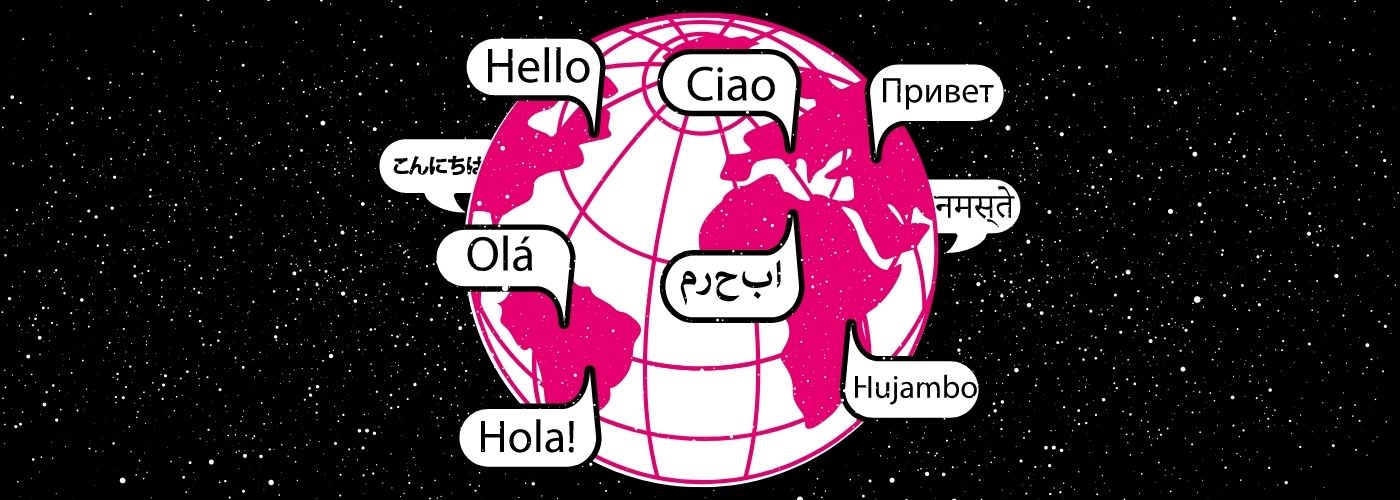How to Choose Languages for Video Translation
Updated: November 29, 2023
Incorporating Translation Into Your Video Production Process [Free Checklist]
In our increasingly globalized society, it’s hard to overstate the importance of translation and subtitling. Although the number is constantly in flux, it’s estimated that there are over 7000 languages spoken worldwide.
Online video content is consumed in thousands of different languages every day. To make your content accessible to viewers who speak other languages, you need to provide subtitles, translations of a video’s dialogue. Video translation has many benefits, such as making your content accessible, searchable, and engaging for a broader audience. However, video translation costs money, and providing subtitles for every language isn’t economically feasible. So, how do you choose the most suitable languages for video translation?
There’s no perfect answer, and every company’s choice will be different. In this blog, we’ll discuss some key metrics and considerations you’ll want to explore in determining which languages for video translation are right for you.
Where are your viewers or customers located?
The optimal languages for video translation will differ for every company depending on where most of their customers or viewers live. There are multiple ways to discover this information, but a straightforward way is to use Google Analytics to learn about your web traffic.
To access this information, open up Google Analytics and click on Reports. Under User, you can click User Attributes Overview, which will show your users’ demographic information for your specified timeframe. The overview shows your users’ countries, cities, and languages, and you can sort by all users, new users, and returning users. You can then click on demographic details for session engagement and conversion data.
Although it’s unnecessary to translate videos to every language your visitors speak, nor is it financially feasible, we recommend looking for locations and languages that garner significant web traffic.
In addition, you can pursue the strongest opportunities by looking at which locations and languages have the highest engagement—for example, through a lower bounce rate or higher pages per session. With this data, you can make a more informed decision for translating your videos into languages most beneficial for your business.
If you publish videos on YouTube, you can easily find where most of your viewers live by navigating to the YouTube Studio and Channel Analytics. Click on the Audience tab and scroll to the geography section, where you’ll find your visitors’ top locations for a given time period.
By discovering where your viewers live and what languages they speak, you can make a more informed decision when choosing languages for video translation. However, don’t assume that having few customers or viewers in a particular country means you shouldn’t translate into their primary language—sometimes, numbers from a certain country are low because you don’t have translation options available.
Where does your business operate?
In deciding which languages to translate your videos to, you must consider where your business operates. Translating your content into their main languages makes sense if you have global offices or employees. Large companies with offices worldwide rely on video translation to help disseminate and localize company content for employees and customers alike.
However, if you only operate in one country, don’t be deceived into assuming one language is sufficient. People speak many languages in different countries, and there are many benefits to translating your content, such as expanding your audience and boosting your video SEO.
Learn how to select the right translation vendor for you ➡️
Which languages have the highest potential for global reach?
Since the beginning of 2021, 3Play Media’s top 10 translation requests by the number of files ordered were for the following languages:
- Spanish
- French
- Japanese
- German
- Portuguese
- Italian
- Korean
- Chinese
- Polish
- Arabic
This data indicates a strong need for offering translation into these particular languages. Although we provide translation services for over 40 languages, these languages make up a large segment of our customers’ requests. Knowing this information can help us make more informed language translation decisions.
YouTube statistics can also provide insight into great translation opportunities. For example, according to Backlinko, the top five countries using YouTube in 2021 by the total estimated number of users are:
| Country | YouTube User |
| India | 225 million |
| USA | 197 million |
| Brazil | 83 million |
| Japan | 60 million |
| Russia | 58 million |
This data indicates that languages in India, English, Portuguese, Japanese, and Russian might be great languages for video translation. However, Backlinko elaborates and explains that the breakdown is different when analyzing the total number of video views from each country, which puts the US ahead of India and shows that the average user in the US is watching many more videos than the average user in India.
According to Backlinko, the top 10 countries sorted by total viewers are the US, India, the UK, Brazil, Thailand, Russia, South Korea, Spain, Japan, and Canada. This data suggests Thai, Korean, and Spanish might be great options for translation, too.
Since 80% of views on YouTube come from outside the United States, translation and subtitling are imperative for reaching a global audience. Knowing which languages are used most often on your video streaming platform is a great way to make more informed decisions for video translation.
Consider ASL Interpretation
ASL, short for American Sign Language, is not only the sign language most commonly used by Deaf people in the U.S. but is also the third most commonly used language after English and Spanish in the U.S. While ASL is a relatively new language founded in the 1800s, it grows in usage each year—as of 2023, ASL is the third most popular language course at Yale.
Adding ASL interpretation to video and audio-only content is an effective way to reach new audiences and make your content more accessible. For example, at 3Play Media, we have added ASL interpretation to podcast episodes and webinars, which you can watch in action below:
In conclusion
Though there is no perfect answer for which languages to choose for video translation, following the tips mentioned above is a great place to start. If you deeply understand your audience and potential for global reach, you’ll be well-equipped to make informed video translation and subtitling decisions.








